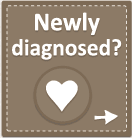
Spinal Muscular Atrophy (SMA) is an inherited disease that causes progressive muscle degeneration and weakness. Infants, like Getty, with SMA Type 1, the most severe type of SMA, are born with very little muscle tone and weak muscles. They develop feeding and breathing problems as the weakness gets worse over time. The weakness eventually becomes severe.
There is no cure or treatment for SMA. The lifespan with SMA is seldom longer than 2 – 3 years.
- SMA is the #1 genetic killer of young children.
- SMA is estimated to occur in nearly 1 out of every 6,000 births.
- 1 in every 40 people, or nearly 10 million Americans, UNKNOWINGLY carries the gene responsible for SMA. Few have any known family history.
- SMA is a pan-ethnic disease and does not discriminate based on race, ethnicity, or gender.
- While there is still currently no cure, in 2017 FDA approved the very first viable treatment for SMA. Spinraza, made by Biogen is currently in broad circulation.
- The American College of Medical Genetics recommends that SMA carrier testing be made available to ALL couples planning a family, regardless of ethnicity or family history.
- SMA does not affect the mind.
What are the different types of SMA?
Individuals with SMA are commonly divided into 4 or 5 groups, although SMA is a single disease or condition. The 4 or 5 types are defined by functional ability. Each “phenotype” is not a separate disease, but serves as a convenient shorthand when discussing the severity of SMA.
Type 1: This is the most severe type of SMA and is characterized by an inability to sit up without support (sometimes referred to as “non-sitters”). The average life expectancy with Type 1 is seldom over 2 years. 60% of SMA births are Type 1.
Type 2: This is characterized by an ability to sit up but not stand (sometimes referred to as “sitters”). The life expectancy with Type 2 is typically over 2 years. 70% of Type 2 patients are alive at age 25. 27% of SMA births are Type 2.
Type 3: This is a milder form of SMA and is characterized by an ability to stand and walk (sometimes referred to as “walkers”) although the ability to walk is eventually lost.
Type 4: This is typically adult-onset SMA and is characterized by an ability to walk that is not lost. The life expectancy with Type 3 and 4 is often not affected by SMA. 12% of SMA births are Type 3 or 4.
Type 0: Some physicians refer to Type 0 as a more severe form of Type 1. The age of onset for Type 0 is prenatal and the average life expectancy is less than 6 months.
To learn more about SMA, join the fight, find a cure, or if you are newly diagnosed, please see the Getty Owl Foundation page, our FAQ, and SMA Links.











